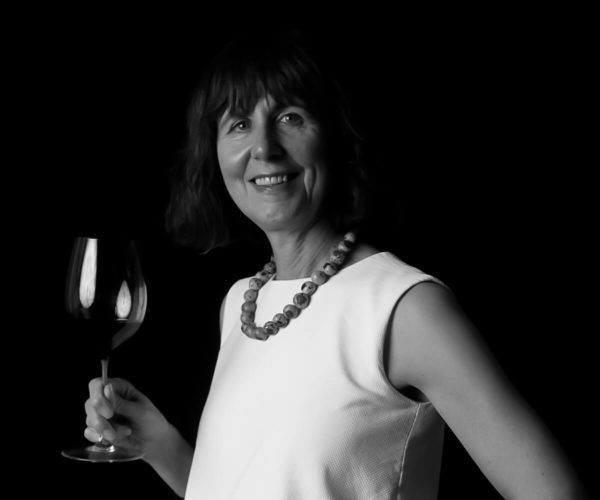
by Mary Gorman-McAdams, MW
To some Dry White Bordeaux might seem like a bit of an oxymoron. Isn’t Bordeaux all about red wine? Well, sort of, but not completely. About 10 percent of the wine produced in Bordeaux is dry white. Though relatively small, the category has never been more exciting.
White Bordeaux wines are essentially blends, made from innumerable (and delicious) permutations and combinations of Sauvignon Blanc, Sémillon, Muscadelle and Sauvignon Gris. Sauvignon Blanc most often plays the leading role for structure and aromatics with Sémillon adding texture, flesh and complexity, Muscadelle bringing aromas, and Sauvignon Gris complementing with body and an attractive, spicy balsamic kick.
A little history first: Until the great frost of 1956 devastated so much of the Bordeaux vineyard, more white grapes were planted, in Bordeaux, than red. In fact, in the late 1950s, 60 percent of the wine produced in Bordeaux was white. Much of these white grapes were destined for either sweet and semi-sweet wine production or they were sold to neighboring areas for distillation. Fast forward 30 years, and thanks to the pioneering work of the late Professor Denis Dubourdieu and visionaries like André Lurton (Château Bonnet), dry white Bordeaux has made a huge well-deserved comeback.
Apart from introducing techniques such as reductive winemaking, temperature control, and skin contact for dry whites, Dubourdieu and his research team at the University of Bordeaux identified the precise molecules in the Sauvignon Blanc grape responsible for its different aromatic and flavor characteristics. Understanding these molecules helped winegrowers better manage work in the vineyard and in the winery to maximize the development of these molecules in the grapes. Called aroma pre-cursors, these molecules are non-volatile in grapes but are rendered volatile through the process of fermentation.
| Pre-Cursor Molecule | Aroma Characteristics |
| 4-mercapto-4 methyl-pentan-2 one (4MMP) | Box and Broom Blossom |
| 3-mercapto-hexan-1-ol acetate (A3MH) | Blackcurrant, Grapefruit, Passion fruit |
| 4-mercapto-4 méthyl-pentan-2-ol (4MMPOH) | Lemon Peel |
| 3-mercaptohexan-1ol (3MH) | Grapefruit, Passion fruit |
Vineyard practices, such as ensuring moderate hydric stress and controlled nitrogen supply, were noted to encourage the development of the pre-cursors in the grapes during the growing season. In the cellar, skin contact, and precise management of the pressing helped extract these pre-cursors from the grape skins.
The Different Appellations
Believe it or not there are actually 13 different appellations for dry white wine production across Bordeaux. Many of these are small and not so internationally commercialized. The largest and most important appellation is the over-arching designation Bordeaux Blanc, whose wines can come from anywhere within the total Bordeaux wine area. While most of these wines are from the Entre-Deux-Mers (choosing to use the Bordeaux Blanc appellation), the designation also includes dry whites produced in areas such as the Médoc, Sauternes, Saint Émilion, etc. – whose appellations only allow for red wine. Coming from a more finite area, wines labeled Entre-Deux-Mers tend to be more homogenous – typically unoaked, crisp, zesty for everyday consumption – and a natural partner for oysters and all sorts of shellfish.
Producers located within the Entre-Deux-Mers area have the option of labeling their wines either Bordeaux Blanc or Entre-Deux-Mers. Of course, every producer has his/her own opinion on labeling that goes deep into the soul and personal philosophy. One significant difference is that wines labeled Bordeaux Blanc can be single varietal wines or a blend, whereas wines labeled Entre-Deux-Mers must be a blend of two or more varieties.
The other two most commercially relevant appellations are Graves and Pessac Léognan. Pessac Léognan, a fairly recently created appellation (1987), is considered the top area for Bordeaux dry whites. Nestled within the northern part of Graves, it is considered to have the best terroir and is home to all of the Châteaux included in the 1959 Classification of Graves. Wines here tend to be barrel fermented and/or barrel age with interestingly higher proportions of Sauvignon in the blend than typically found collectively across the greater Graves area.
White Bordeaux is often polarized as either being the quaffable stuff from the Entre-Deux-Mers or the complex age-worthy wines from Pessac. In my personal view, this sells the category short. Dry white Bordeaux is way more diverse and interesting than these two bookends suggest. Today, there is incredible dynamism and passion among the many small growers, who are very terroir-focused with plot-by-plot viticulture and curious in experimenting with more interesting blends as well as varietal wines that go beyond Sauvignon Blanc, such as varietal Semillon, Sauvignon Gris and Muscadelle wines. There is experimentation with different fermentation vessels, vinification methods, maturation techniques, and lees treatment. This, I believe, reflects the growing confidence and passion among growers to let the wines speak for themselves and manifest the many and diverse terroirs for white grapes across Bordeaux.






